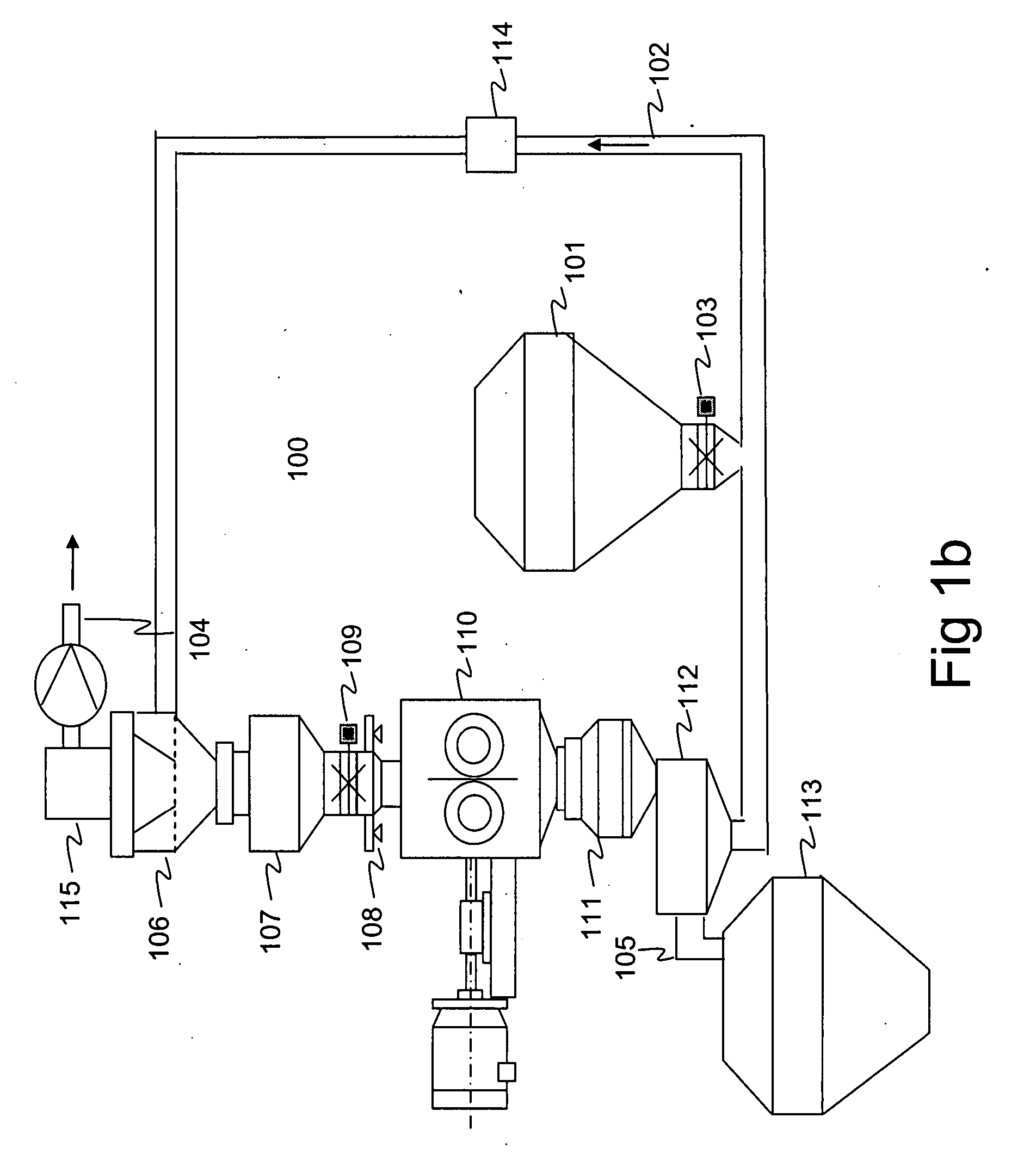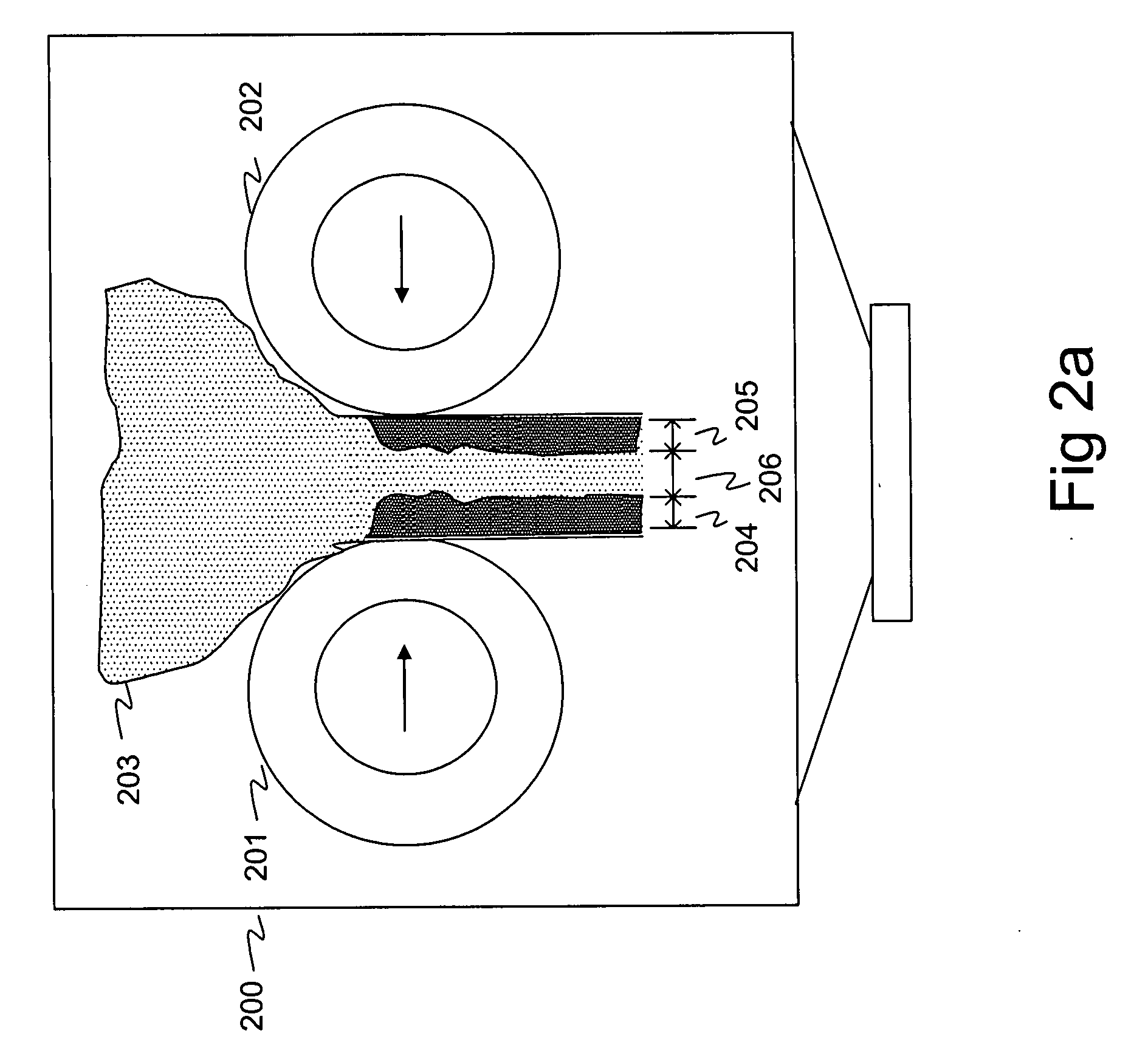Granules, tablets and granulation
a technology applied in the field of granules and tablets, can solve the problems of relatively little use, difficult method, applied to materials, etc., and achieve the effects of convenient cleaning and assembly, fast treatment of large amounts of materials, and easy control
- Summary
- Abstract
- Description
- Claims
- Application Information
AI Technical Summary
Benefits of technology
Problems solved by technology
Method used
Image
Examples
example 3
Flowability Example 3
[0221] A powder mass of approximately 3.0 kg containing 70% of microcrystalline cellulose (EMCOCEL CAS No. 9004-34-6 Batch 5S3689) and 30% of maize starch (CERESTAR Mat. no. 03401, batch 01015757) was mixed. Compaction force of 16 kN and flake crushing screen mesh size of 1.00 mm was used to produce granules having mean size of 318 micrometers and standard deviation of 2.159 after fractionation. 19.6% of the granules of the mass had diameter of smaller than 106 micrometers. The loose bulk density of the resulting mass was 0.379 g / ml and tapped bulk density was 0.510 g / ml. The Hausner ratio of the mass was measured to be 1.35. Despite the high compressibility of the mass as indicated by the Hausner ratio, the flowability was observed to be excellent.
example 4
Flowability Example 4
20% Ketoprofen
[0222] A powder mass of approximately 4.0 kg containing 20% of ketoprofen (S.I.M.S. Societa italiana medicinali Scandicci, batch 121.087) and 80% of microcrystalline cellulose (EMCOCEL CAS No. 9004-34-6 Batch 5S3689) was mixed. Compaction force of 24 kN and flake crushing screen mesh size of 0.71 mm was used to produce granules. When the suction fan speed of the system was set at 1980 RPM, the mean size of the accepted granules was 304 micrometers and standard deviation was 2.275 after fractionation. 23.0% of the mass had particle size smaller than 106 micrometers. The loose bulk density of the mass was 0.510 g / ml and tapped bulk density was 0.676 g / ml. The Hausner ratio of the mass was measured to be 1.325. The flowability of the mass was observed to be sufficient. When the suction fan speed of the system was set at 2400 RPM, the mean size of the accepted granules was 357 micrometers and standard deviation was 2.121 after fractionation. 13.7% of ...
example 1
Fractionating Example 1
[0224] A powder mass of approximately 5.0 kg containing 50% of microcrystalline cellulose (EMCOCEL CAS No. 9004-34-6 Batch 5S3689) and 50% of maize starch (CERESTAR Mat. no. 03401, batch 01015757) was mixed and granulated. Reprocessing of the rejected fraction was prevented in the granulation process. To achieve this, the mass to be processed was manually fed to the intermediate vessel (107 in FIG. 1b) from where it was conveyed to the compactor (110 in FIG. 1b) by opening the valve (109 in FIG. 1b) before starting the process. The process was then started and the mass of 5.0 kg was granulated and fractionated. During the processing, the valve (109 in FIG. 1b) was kept shut to prevent re-processing of the rejected fraction. Compaction force of 40 kN and flake crushing screen mesh size of 1.00 mm was used to produce granules having mean size of 523 micrometers (standard deviation 1.70) after fractionation. The test run produced 1630 g (32.6%) of accepted granul...
PUM
| Property | Measurement | Unit |
|---|---|---|
| particle size | aaaaa | aaaaa |
| compaction force | aaaaa | aaaaa |
| compaction force | aaaaa | aaaaa |
Abstract
Description
Claims
Application Information
 Login to View More
Login to View More - R&D
- Intellectual Property
- Life Sciences
- Materials
- Tech Scout
- Unparalleled Data Quality
- Higher Quality Content
- 60% Fewer Hallucinations
Browse by: Latest US Patents, China's latest patents, Technical Efficacy Thesaurus, Application Domain, Technology Topic, Popular Technical Reports.
© 2025 PatSnap. All rights reserved.Legal|Privacy policy|Modern Slavery Act Transparency Statement|Sitemap|About US| Contact US: help@patsnap.com



